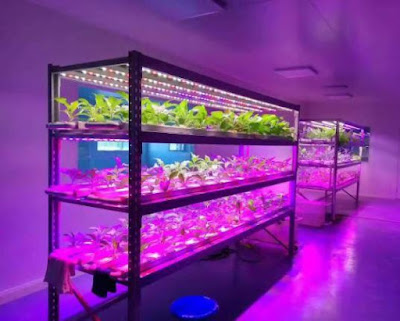Grow lights are lamps that use the principle of plant photosynthesis to supplement light for plants. It can be used to extend plant light exposure, as supplemental light in rainy weather, in conditions lacking natural light, or as a complete replacement for natural light in greenhouses. Common plant grow lights include incandescent lamps, fluorescent lamps, HID lamps, and LED lamps.

Selection and installation of plant grow lights requires certain expertise.
First of all, plants need a certain light intensity and reach the light compensation point to grow normally. If the intensity does not reach the light compensation point, it will not work for plant growth, which is why some people say that plant lights are useless. When the light reaches the light saturation point, the accumulation of photosynthesis substances will no longer increase, and even the phenomenon of photoinhibition will occur when the light saturation point exceeds the light saturation point. Generally, it is difficult for plant lights to reach the light saturation point. If the intensity exceeds the compensation point, it will inevitably cause waste, even inhibit growth, burn leaves, and play a negative role. The light compensation point and light saturation point of various plants are different, so it is necessary to choose a lamp with an appropriate light intensity according to the type of plant.
The unit of plant light intensity is PPDF
PPDF is the effective light intensity per unit area, and cannot be directly interchanged with the normal light unit lux. Because the light contains wavelengths that are useless for photosynthesis. The effective light intensity of the plant light is not only related to the light intensity and spectral range of the plant light, but also related to the hanging height and light area. Be sure to consult the manufacturer or reference manual.
Another important parameter about plant lights is the spectral range.
In general, the red and blue wavelengths are the most effective for plant photosynthesis. The blue wavelength is conducive to the growth of plant stems and leaves, and the red wavelength is conducive to the flowering and fruiting of plants.
Ultraviolet wavelength light:
200-280nm: UVC, which seriously damages the normal growth of plants, but can be used for sterilization.
280-315nm: UVB, can make plants aging, dwarf, improve plant resistance, and prevent plants from growing too long.
315-380nm: UVA, commonly used for coloring succulents, making the color of succulent leaves beautiful.
Visible wavelengths:
380-400nm: violet light, less absorption by plants
400-520nm: including violet light, blue light, bright green light. The absorption of chlorophyll in this wavelength is strong, which can promote photosynthesis and promote the growth of stems and leaves. A single blue light exposure can cause leggy.
520-610nm: including orange light, yellow light and green light. Chlorophyll and carotenoids both absorb weakly in this wavelength and promote less photosynthesis.
610-720nm: Red light has a greater impact on photosynthesis. Chlorophyll has the strongest absorption capacity in this wavelength, which greatly promotes photosynthesis and promotes flowering and fruiting of plants.
Infrared wavelength:
720-1000nm: near-infrared wavelength, has a slight effect on plant flowering and germination
Above 1000nm: the far-infrared wavelength is mostly released as heat energy, which has no practical effect on plants growth.
This is the general effect of a wavelength wavelength on plant growth. It is necessary to choose a plant light with suitable wavelengths for different types of plants. It is worth noting that because the human eye cannot directly sense the wave lengths, there are many fake growth lamps on the market. It is recommended to buy them from regular manufacturers.




No comments:
Post a Comment